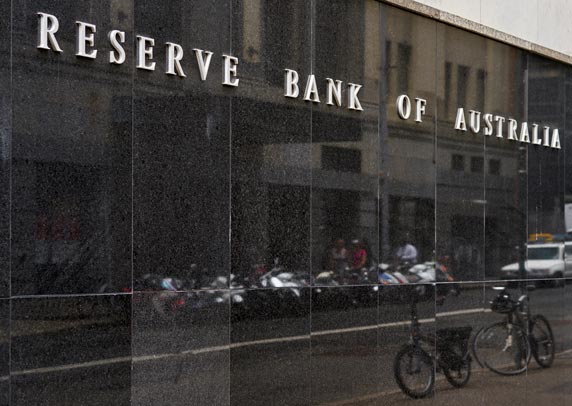From The Australian Financial Review.
The Reserve Bank of Australia under governor Philip Lowe has backed the concerns of regulators about bank lending standards, seizing on the rising number of households who are a month away from missing a mortgage payment in his first major review of the financial system.
Dr Lowe has zeroed in on a rise in the percentage of households who have a buffer of less than one month’s mortgage payments, in contrast with the last review conducted under his predecessor which saw risks abating.
The RBA has put the spotlight firmly bank on the banks in its twice yearly report by noting “one-third of borrowers have either no accrued buffer or a buffer of less than one month’s payments”.
This latest study of the financial architecture adds more detail to the worrying picture emerging about the unbalanced housing market. It follows concerns from the Australian Securities and Investments Commission and the Australian Prudential Regulation Authority about a build up of risks and warnings from credit ratings agencies that the property market could face an orderly unwinding of prices.
The RBA also noted that these risks would have consequences for the banks themselves, pointing to the prospect of additional losses on mortgage portfolios for banks with exposures to the mining sector.
Significant pivot
The focus on households and the state of their balance sheets marks a significant pivot from the previous Financial Stability Review released one month before Dr Lowe was made governor and found that risks to households had lessened.
Founder of boutique research house Digital Finance Analytics Martin North said it was about time the Reserve Bank woke up to the risks posed by higher levels of household debt and stagnant incomes.
“This situation hasn’t fundamentally worsened in six months so it stands to reason what has changed is the RBA’s perception of the world,” Mr North said.
Statistics from Digital Finance Analytics show the percentage of Australian households that are cutting back expenditure, dipping into savings or using credit facilities to meet mortgage payments has risen to 22 per cent following a series of out-of-cycle rate rises from the banks.
Big four data supports warning
Data published by the big four banks supports the warning from the RBA with anywhere between 20 and 40 per cent of big four bank mortgage holders just a misstep away from missing a mortgage payment.
ANZ and NAB, which measure the percentage of mortgage holders who do not have buffers of one month or more, count 61 per cent and 27.7 per cent of their customers respectively in the non-buffer bracket.
Commonwealth Bank and Westpac, which use a less stringent buffer measure to include any additional repayment and factor in offset accounts, put 23 per cent and 28 per cent of customers in the RBA’s danger zone.
Annual result data from the banks shows that the percentage of customers who do not have sufficient buffers have worsened by between 2 per cent and 3 per cent over the last 12 months alone.
The worsening position of households has been attributed to rising healthcare and energy costs combined with out-of-cycle rate rises and flat incomes.
Mr North noted that much of the data on households was predicated on the HILDA data which had a lag of several years.
“We have always had households that struggle to make mortgage payments,” Mr North said. “So the intriguing question for me is why have they woken up now? It could be that the governor has taken a different view on household debt.”

